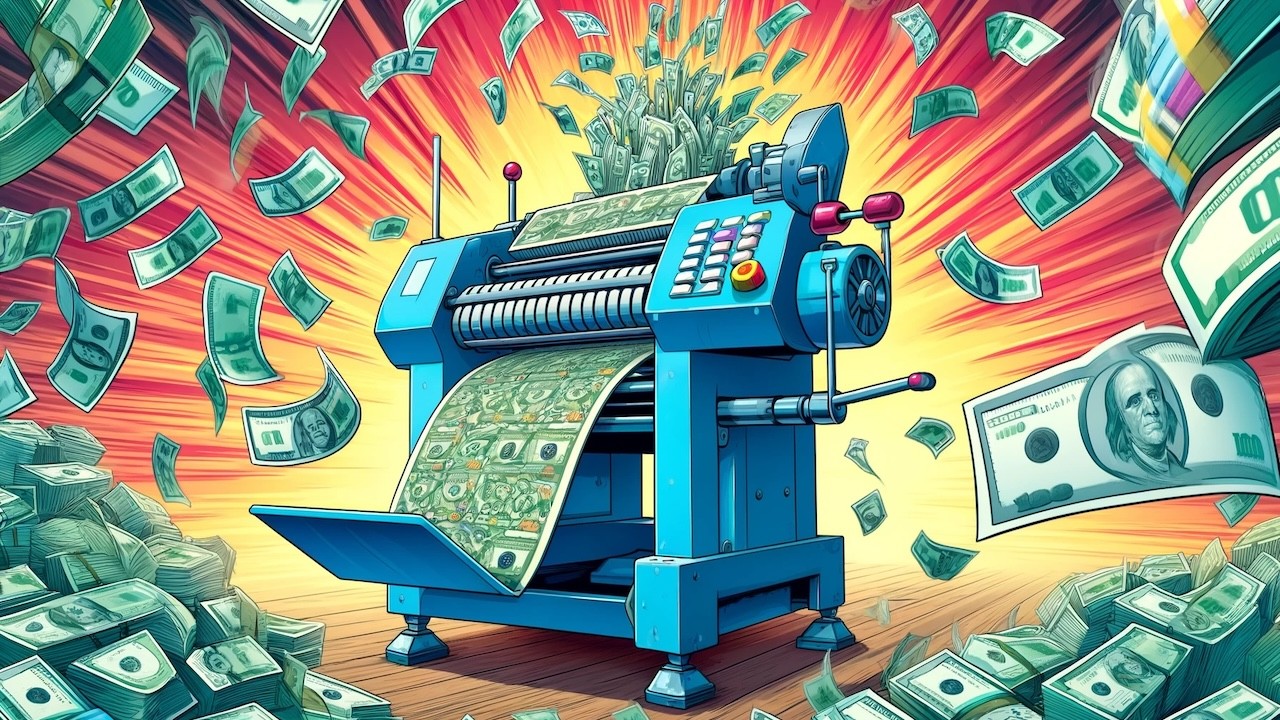(Mike Maharrey, Money Metals News Service) If you follow alternative financial media, you’ll often hear dollars derisively referred to as “fiat currency.” What exactly does this term mean and why is it often used as a slur?
Investopedia defines fiat money as a government-issued currency not backed by a physical commodity such as gold or silver.
So, what is fiat backed by?
“The full faith and credit” of the issuing government.
In other words – nothing.
Fiat money is just paper (or digits in a computer). It only has value because the government says so, and the majority of people accept it at its word. It doesn’t hurt that governments have the power to maintain a monopoly over their currency through legal tender laws, keeping competing currencies at bay.
All modern government currencies are fiat, including the dollar, the euro, the yen, and the yuan.
Since fiat money isn’t tethered to a commodity, its value effectively floats. It is based on supply and demand, along with the stability of the issuing government. Most people express the value of fiat money by comparison to other fiat currencies. When you hear about a “strong dollar” it means the greenback is strong compared to other global currencies.
The Problem With Fiat Money
So, what’s the problem with fiat?
It is effectively limitless.
Governments can create as much fiat money as they want. We often refer to this as “money printing,” although today it’s not even that hard. A government or central bank can create new money with a few keyboard strokes.
As economist Thorsten Polleit put it, fiat money economies are built on lies.
“Fiat currencies are produced by central banks and commercial banks’ credit expansion. In fact, central banks in cahoots with commercial banks increase the outstanding money supply by extending loans to firms, private households, and government entities. It amounts to money creation from thin air or—in a way—counterfeiting money.”
We go to prison for counterfeiting. The government does it as a matter of policy.
But when you really think about it, there is no fundamental difference between me printing off a bunch of bills and calling it “money” and the government doing it. If I could get enough people to believe my paper had value, it could be money too.
Sound money such as gold and silver, or currencies backed by a commodity, are limited by the supply of that commodity. You can’t print gold or silver. That means if a country issues a gold-backed currency, the only way it can create more is to acquire more gold. This limits the issuance of new money, minimizing inflation and keeping the value of money relatively constrained and constant.
Think of it this way: when you make more of a thing, the value of the other thing decreases. If you have 100 widgets and make 100 more, the value of each widget will decrease (assuming demand is stable.) The same is true for dollars. When you make more dollars, each individual dollar is worth less and it buys less. Or as Polleit put it, “The relentless expansion of the quantity of fiat money causes the purchasing power of the money unit to decline over time.”
“What is more, increasing the quantity of fiat money creates winners and losers, it is not a win-win game: The early receivers of the new money benefit at the expense of the late receivers. It leads to an unjust and unsocial distribution of income and wealth within society.”
You can see the inflationary tendency in the fiat dollar economy when you compare the expansion of the gold supply to the expansion in the dollar supply.
The above-ground gold stock has expanded by an average of 1.2 percent annually over the last 529 years. Since 1960 the average growth in the gold supply is slightly higher at 1.8 percent, ranging from 1.4 percent to 2.2 percent per year.
Meanwhile, since 1960, money supply growth varied from a low of 1 percent in 1993 to a high of 19.1 percent in 2020. The inconsistency in the growth rates results in frequent and sharp swings in prices. There are either not enough or too many dollars circulating relative to the prevailing level of economic activity. This volatility is part of the boom-bust cycle.
But over the long haul, the value of every fiat currency depreciates over time because governments can’t resist the temptation to create more of it.
Consider the dollar. The greenback has lost more than 85 percent of its value since President Richard Nixon severed the dollar from the last vestiges of the gold standard. The purchasing power of a 1971 dollar is equal to about 13 cents today.
Meanwhile, the dollar value of gold has gone from $35 an ounce to around $2,300 an ounce today. In percentage terms, that’s a 6,471 percent increase.
Fiat money also introduces counterparty risk. In simple terms, it is the possibility that the party on the other side of a transaction might not fulfill its obligation.
Who is the counterpart behind fiat money?
The government.
If you trust the government to maintain a sound, stable currency, I guess there’s no problem. But if you don’t?
When you boil it all down, fiat money is smoke and mirrors. You want real money. And gold and silver have been filling that role for thousands of years.
Mike Maharrey is a journalist and market analyst for MoneyMetals.com with over a decade of experience in precious metals. He holds a BS in accounting from the University of Kentucky and a BA in journalism from the University of South Florida.

